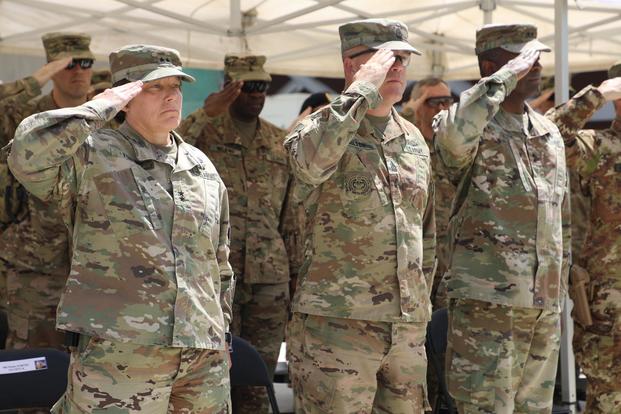The U.S. Army said Tuesday that more than 97 percent of its generals are currently deployable, after a news story this week reported that up to one in five of its general officers were non-deployable in 2016 for medical reasons.
USA Today reported that data for 2016 showed the "rate for active-duty, ready-to-deploy generals, not including the Reserve or the National Guard, was 79.6 percent."
Overdue medical and dental exams were the main reason for failure to meet what the Army refers to as medical readiness in 2016, but the medical readiness rate for generals has improved to nearly 85 percent, USA Today reported.
Army officials said the medical readiness rate is not the same as the deployable rate. For example, a 30-day, temporary profile or an out-of-date dental exam does not mean a soldier is non-deployable.
"As of October 2018, over 93 percent of the total Army -- soldiers of all ranks -- are deployable, while over 97 percent of Army general officers are deployable," service spokeswoman Kathy Turner told Military.com.
About nine months have passed since Defense Secretary Jim Mattis announced that the U.S. military has no place for service members who are incapable of deploying for more than 12 months.
The Army announced recently that it had reduced its number of non-deployable soldiers from last year's 121,000 -- about 15 percent of the total force -- to about 59,000, which is about 6 percent of the active duty, Guard and Reserve.
"The Army has made substantial gains since October 2016, and the data from that time does not reflect recent improvements in deployability for the Army as a whole and for the general officer corps specifically," Turner said. "The Army's top priority is readiness, and soldiers are expected to be worldwide deployable to ensure our Army is ready to fight today and in the future."
The service also recently released a new policy for dealing with soldiers who are non-deployable for administrative reasons after the Pentagon's new deploy-or-out policy took effect Oct. 1. The policy for the first time defines the six criteria all soldiers must meet to be deemed deployable.
The data in the USA Today story came from a June 2017 report on the state of the Army's general officer corps that was obtained through the Freedom of Information Act.
-- Matthew Cox can be reached at matthew.cox@military.com.












